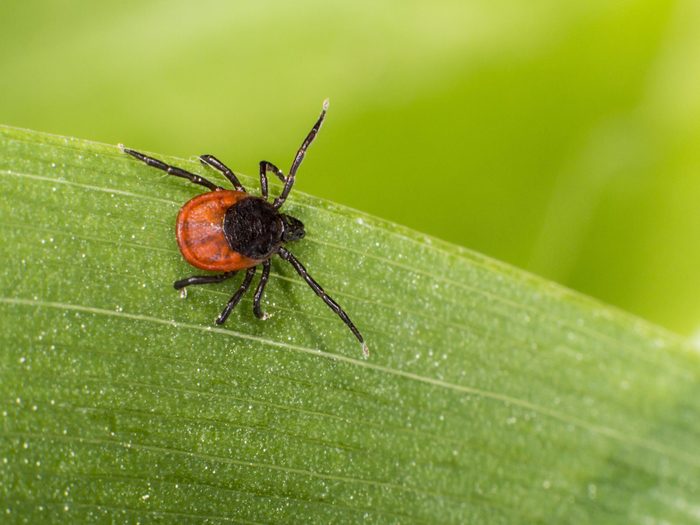
1. Lyme Disease is Caused by Black-Legged Ticks
Lyme disease is caused by Borrelia bacteria. Black-legged ticks bite infected deer, birds or rodents, then transmit the bacteria to humans and pets.
Adult ticks are about the size of a sesame seed, which makes them difficult to spot. In order to get Lyme disease in the first place, you must be bitten by an infected tick that remains attached to your skin for at least 16 to 18 hours to push the bacteria into your bloodstream.

2. Lyme Disease Symptoms Aren’t Obvious
Initial symptoms may mimic those of the flu. Anywhere from three to 30 days after being bitten, a sufferer might develop a fever, aches, chills and fatigue. Some people also get a rash, which may resemble an expanding bull’s eye or rough red patch, at the site of the bite.

3. The Effects of Lyme Disease Can Be Serious
If Lyme disease isn’t identified and dealt with early on, it can lead to a secondary set of symptoms, including arthritic joint pain, heart problems, central nervous system difficulties and neurological issues, such as meningitis and facial paralysis.

4. Lyme Disease is On the Rise in Canada
Due to rising temperatures brought on by climate change, ticks are moving up from the midwestern and northeastern U.S. earlier each spring and expanding their habitat across the continent, bringing Lyme disease with them.
In 2014, there were 522 reported cases in Canada, while preliminary reports identified 707 cases in 2015. But experts posit the disease is underreported, and the Public Health Agency of Canada estimates Lyme will affect more than 10,000 Canadians annually by the 2020s.

5. Lyme Disease is Difficult to Diagnose
Not only are infected ticks on the rise, but there’s ongoing confusion that surrounds the disease they carry. Since Lyme disease is new to many parts of Canada, doctors might be unaware of its symptoms.
Treatment, which can be lengthy, is often complicated by conflicting opinions about protocol. In accordance with Health Canada guidelines, not all doctors will do tests unless they can confirm a clinical diagnosis based on specific symptoms.

6. Prevention is Possible
The key is not to get bitten – no tick bite, no Lyme. When you’re in the woods, use an insect repellent containing DEET and wear long sleeves and pants tucked into your socks.
If you do find a tick, don’t panic. Just grab the tick at the head with tweezers and slowly pull straight up (if you squeeze it by hand, you could push the bacteria into your skin). If possible, put the tick in a re-sealable plastic bag and freeze it, for testing. Call your doctor, who can watch for symptoms or prescribe a preventative course of antibiotics.
Related features:
Keep Your Pet Tick Free
How to Treat and Prevent Insect Bites this Summer
5 Things for Bug Bites and Itches